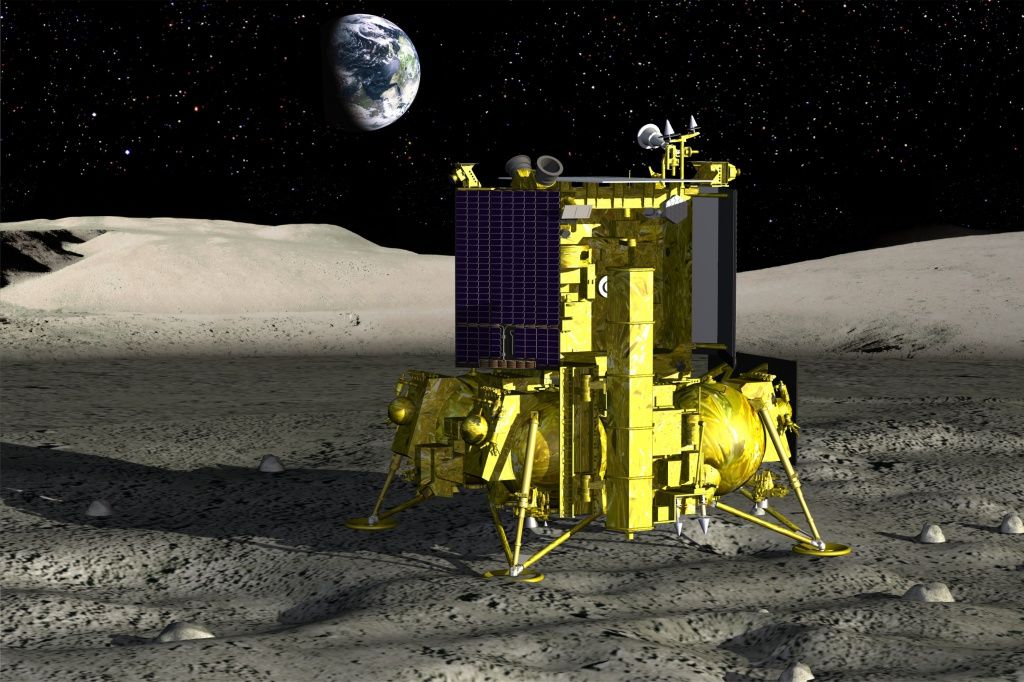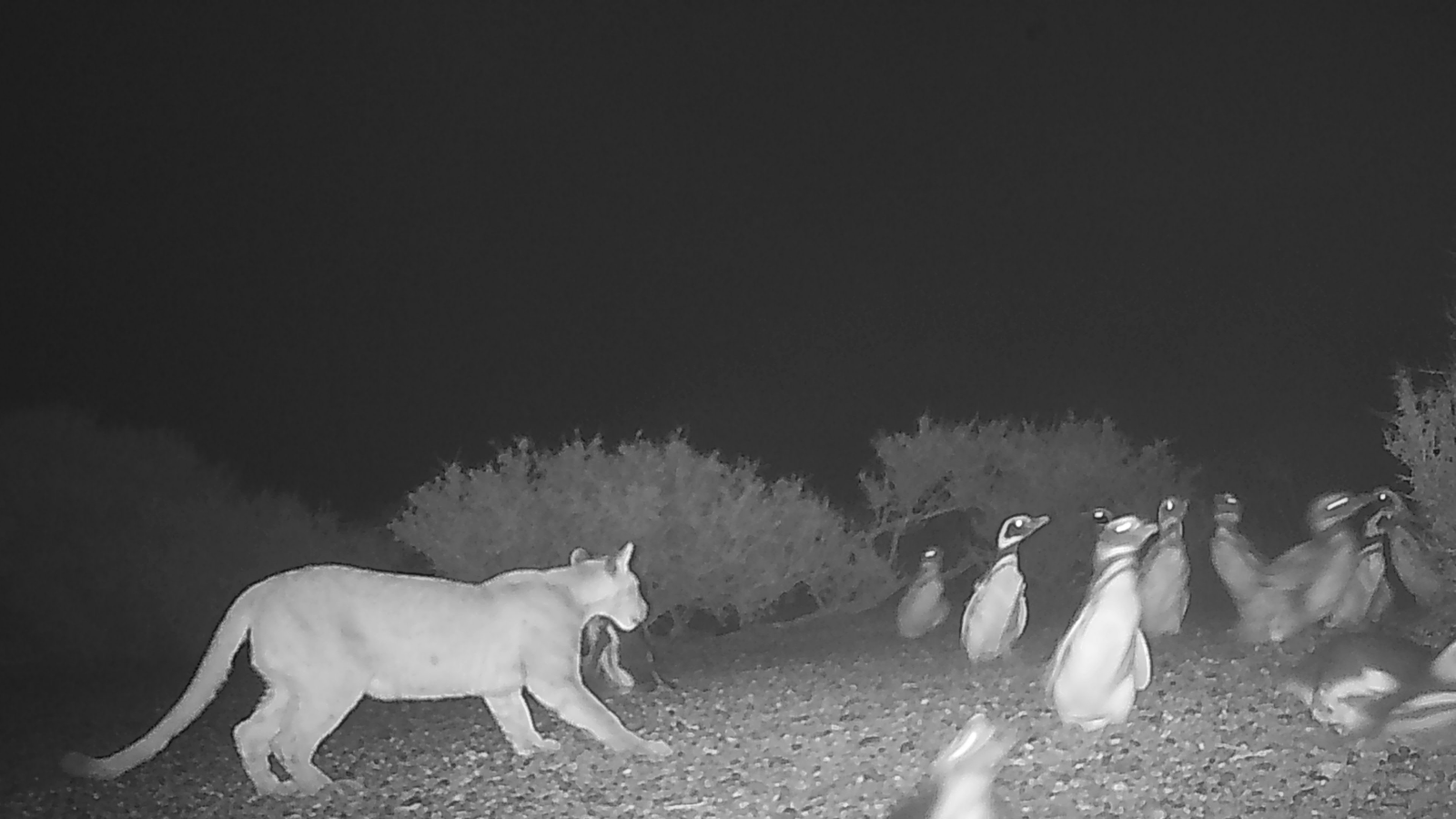Russia's Luna-25 lander just crash-landed on the moon, space agency confirms
Luna-25, Russia's first moon mission in 47 years, was the vanguard of a planned series of lunar probes.

Russia's first moon lander in 47 years has crashed into the lunar surface, the country's space agency reported on Sunday (Aug. 20).
The Luna-25 lander, which Russia had hoped would land at the south pole of the moon as early as Monday (Aug. 21), crashed into the moon after an orbital maneuver went wrong yesterday (Aug. 19), officials with Russia's Roscosmos space agency said.
"At about 14:57 Moscow time [on Aug. 19], communication with the Luna-25 spacecraft was interrupted," Roscosmos wrote in an update on Telegram today (in Russian; translation by Google). "The measures taken on August 19 and 20 to search for the device and get into contact with it did not produce any results."
Related: Russia wants to land 3 next-generation Luna spacecraft on the moon by 2025
A preliminary analysis suggests that the wayward orbital maneuver sent Luna-25 into an unexpected trajectory, one in which the moon lander "ceased to exist as a result of a collision with the lunar surface," Roscosmos wrote.
Luna-25 was hoped to be a major space milestone for Russia. The last moon probe from the country was Luna-24 in 1976, when Russia was still part of the Soviet Union. That probe landed in the moon's Sea of Crises (Mare Crisium) and ferried a sample back to Earth, a few years after the last human moon landing by NASA in 1972. Luna-25 was targeted to touch down near the south pole of the moon, where the probe was to spend one Earth year searching for water ice and performing a number of scientific investigations.
Aside from hunting water ice, Luna 25's main science goals included examining the regolith and rocks around it, looking at the wispy lunar atmosphere and testing out technology for future landings on the moon.
Russian aerospace company NPO Lavochkin designed and built the lander, which had two major parts: a landing platform with a propulsion system; and landing gear, including a velocity and range meter for use during landing. Also on the lander was a non-pressurized instrument container for items such as solar panels, radiators, antennas, television cameras, a power source and scientific equipment.
Get the world’s most fascinating discoveries delivered straight to your inbox.
The loss of Luna-25 could be a major blow to Russia's plans to fly a series of moon missions and its effort to develop a permanent crewed based on the moon with China.
Roscosmos plans to follow Luna-25 with a lunar orbiter, called Luna-26, and then two more landing missions: Luna-27, which will send a drilling rig to the lunar surface; and Luna-28, a sample-collection mission that aims to return material from the moon's polar regions to Earth.
Those subsequent moon missions will likely be delayed due to Luna-25's failure, as Roscosmos investigates to find the root cause of the probe's crash into the moon. The mission had already been delayed by technical issues and challenges due to sanctions over Russia's ongoing war on Ukraine that led the European Space Agency — which was to provide a precision camera to help Luna-25 land — to pull out of cooperative space projects with the country.
Roscosmos officials said Sunday that they have already formed a team to investigate the crash of Luna-25.
"A specially formed interdepartmental commission will deal with the issues of clarifying the reasons for the loss of the moon [lander]," Roscosmos wrote in the Telegram update.
Russia is not alone in reaching for the moon's south pole. India's Chandrayaan 3 lander is also on track to touch down in that area very soon, as early as Aug. 23 or Aug. 24. NASA also has the south pole in sight, as a key part of its Artemis program to put people and landers on the moon in the coming decade.
NASA plans to land the crewed Artemis 3 mission near the south pole in late 2025 or 2026, provided that Artemis 2 loops around the moon as planned with its crew in late 2024 and that the spacesuits and lander (SpaceX's new Starship vehicle) are ready. NASA also has help fund a series of commercial robotic landers, some of which may touch down on the moon as soon as this year.

Elizabeth Howell was staff reporter at Space.com between 2022 and 2024 and a regular contributor to Live Science and Space.com between 2012 and 2022. Elizabeth's reporting includes multiple exclusives with the White House, speaking several times with the International Space Station, witnessing five human spaceflight launches on two continents, flying parabolic, working inside a spacesuit, and participating in a simulated Mars mission. Her latest book, "Why Am I Taller?" (ECW Press, 2022) is co-written with astronaut Dave Williams.
- Tariq MalikSpace.com Editor-in-chief



